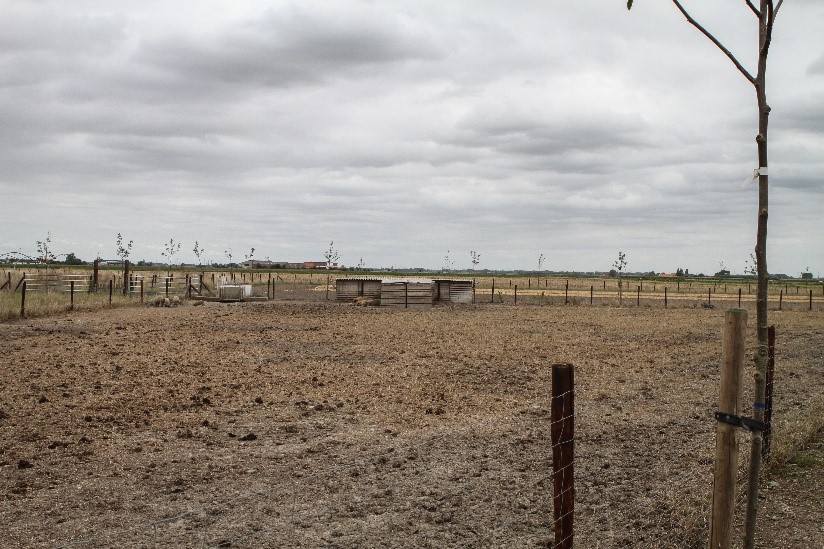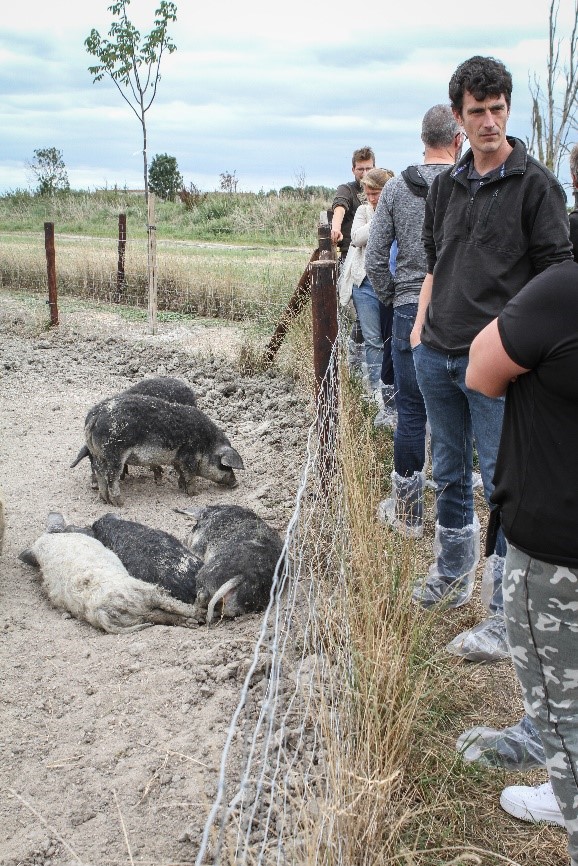What was the challenge/ problem addressed?
Conventional pig farming in Flanders is facing problems in terms of profitability. Responding to the increased consumer interest in more sustainable and locally produced food, several pig farmers have been looking for an alternative market to focus on. One way is to give their product an added value by working with free-range pigs in agroforestry. This system has a lot of potential benefits for farmers, animals, and the environment but practitioners are confronted with a lot of practical issues and questions. There are legal issues, the economic part is still unclear, there is a lack of knowledge, risk of damaging the trees by pigs, questions on animal health and welfare,… This is due to the lack of practical examples and experiences with this system in our region. This lack of information is an important factor holding back the farmers to implement this system in their farming business. With this operational group, we involved farmers with experience on or interest in the topic, agricultural research institutes, farmer advisors, government agencies,… This allowed us to identify the main challenges. Through contacting experts, looking abroad for examples, and performing a literature study we searched for answers and came up with a ‘practical guide’ on free-range pigs in agroforestry.
How did you solve the problem?
Free-range pigs in agroforestry is definitely a new farming system delivering niche products in our area. It addresses an innovative alternative market that still leaves room to exploit. There was very little information available on the topic for our region and if there was, it was very difficult to obtain.
In the duration of the project, we have realized two new agroforestry systems with free-range pigs in cooperation with farmers. These systems were used as demonstration sites for other members of the operational groups. These systems were described in articles (including explanations on the choices made in designing the system, how certain practical issues were addressed, the marketing and business model,…) and spread widely. We also did the same for inspirational examples from abroad. On a regular basis, we also met with members of the operational group on the field to look at the example sites, discuss the issues we were facing and the possible solutions, and follow presentations from thematic experts. All of this information was captured and written down in a ‘practical guide’ on how to work with free-range pigs in agroforestry (what trees can be used, how to protect your trees, what are suited pig-breeds, how does it impact animal welfare, how to design the free-range area, impact on finance, existing regulations,…). This guide is available to all farmers and can be found online.
What are the success factors in solving the problem?
- Bringing farmers together on-field. Farmers talking to farmers is a very efficient way of spreading knowledge and experience.
- Demonstration of good examples.
- Involving a range of stakeholders. Not only farmers themselves but also people involved in policy for example. This project taught us that free-range pigs in agroforestry is a very specific context and that the existing general regulations on agroforestry are not always suitable to this specific situation. The same applies to regulations in pig farming.
- Creating a central place where all relevant info can be found and that is easily accessible for farmers
- Building further on other projects and existing knowledge
Unexpected fails, if any
- Problems with the installation of one of the demo systems due to unexpected resistance to this farming system by the landowner. This problem emphasized a problem that is still often occurring with agroforestry. Planting trees on farmland is still a sensitive issue in some cases.
- Heavy rainfall combined with pigs on-field led to problems with tree planting (fields becoming mud pools) and loss of trees.
Lessons learned
- Consumers are increasingly interested in sustainable meat production and are willing to pay extra for this. Transparency and story-telling from farmer to consumer is crucial.
- Starting a free-range pig system requires the farmer to contact local authorities to back up the project. Sometimes local residents can be a bit worried about possible nuisance (for example smell). Well informing the neighborhood can solve this to a large extent
- The ability to slaughter the pigs on-farm is important. This causes less stress with the pigs and is beneficial for the quality and taste of the meat. There is a need for more in-depth study on the economic feasibility.
Pigs:
- more insight into the suitability of different pig breeds for agroforestry systems. These systems require for example disease-resistant breeds with caring mothers. We were able to produce a clear overview explaining the suitability of different breeds.
- the natural environment is beneficial for animal welfare. The effects on health remain unclear with examples showing benefits and other examples pointing out possible problems.
Trees:
- choice of species is depending on the soil and desired added value for the pigs (fodder, shadow,…)
- protecting trees from rooting pigs is crucial
- Important to let trees grow strong before letting the pigs near them
- Rotation of the pigs within the system is recommended
What role does the advisor or advisory service play within the practical case?
Farmers were guided during the design of their agroforestry system with free-range pigs. The partnership made a plan for the parcel indicating the location of the trees together with a suggestion of which tree species could be beneficial for their system and some tips and tricks of how to protect their trees. The partnership also guided these farmers in applying for the Flemish agroforestry subsidy.
Besides the role in the realization of the demonstration systems, the role of the organisation was to bring stakeholders together in the field and stimulate the knowledge exchange between them. To do this, we regularly organised terrain visits. The project partnership also used these meetings to capture the needs and questions of stakeholders, so that we were able to address them in future meetings or include them in our ‘practical guide’.
Can your approach be transferred and/or adapted for other innovation challenges and regions?
Yes
Estimated transferability on a scale from 1 to 5
(where 1 is easy and 5 very difficult)
3
For sharing the experience on the good practice, please contact Willem Van Colen (Willem.vancolen[at]inagro.be)
Search for more information https://www.agroforestryvlaanderen.be/nl/projecten/porchard


